Rkhama, the moroccan peanut and chocolate candy that doesn't need an oven
A Moroccan candy that looks like nougat, has a compact texture that melts when you bite into it and tastes like chocolate peanuts? It exists, it's called rkhama, and the best thing is that you don't need an oven, a thermometer or half a lifetime in the kitchen to prepare it. Just a bowl, a chopper and some time in the fridge. This traditional Moroccan sweet is prepared especially during celebrations such as Aid el-Fitr (at the end of Ramadan) or the feast of the Lamb, and it is usually shared with other delicacies such as the almond briouats, baghrirs or a good glass of authentic Moroccan tea with mint.. The recipe is as easy as mixing crushed peanuts with condensed milk, perfumed with orange blossom water and covered with melted chocolate. If you have a sweet tooth and feel like trying something different without complicating your life, this Moroccan recipe is for you.
Ingredients
Materials
- Mortar or chopper/blender
- Pastry bag
- Mold (optional)
- Cling film or baking paper
- Wooden skewer or toothpick or knife
Preparation
 Chop the peanuts with a chopper, making sure there are no lumps.
Chop the peanuts with a chopper, making sure there are no lumps. In a large bowl, mix the chopped peanuts with the cinnamon, orange blossom water, condensed milk and pinch of salt.
In a large bowl, mix the chopped peanuts with the cinnamon, orange blossom water, condensed milk and pinch of salt.
 Stir until a dense and homogeneous paste is obtained.
Stir until a dense and homogeneous paste is obtained.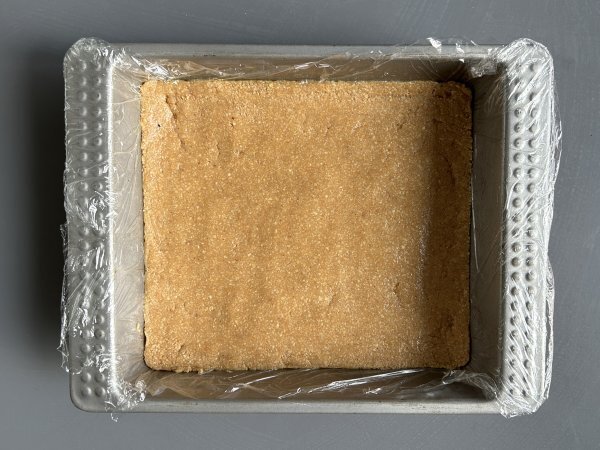 Line the base of a baking pan with cling film or baking paper, making sure that it overhangs the edges to facilitate unmolding. Pour the peanut paste and spread it well, distributing it evenly and smoothing it with the help of a soup spoon, the base of a glass or a pastry scraper. Reserve in the refrigerator while continuing with the recipe.
Line the base of a baking pan with cling film or baking paper, making sure that it overhangs the edges to facilitate unmolding. Pour the peanut paste and spread it well, distributing it evenly and smoothing it with the help of a soup spoon, the base of a glass or a pastry scraper. Reserve in the refrigerator while continuing with the recipe.
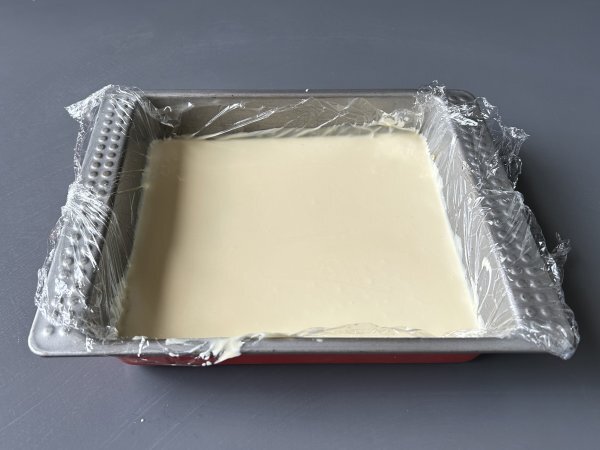 Chop the white chocolate (reserving a part for the topping), place it in a bowl and add a teaspoon of sunflower oil. Melt the chocolate in the microwave or in a bain-marie. Spread it evenly on the peanut paste sheet, using a spatula. Gently tap it on the worktop to level it out. Refrigerate until the chocolate hardens (about 15 minutes).
Chop the white chocolate (reserving a part for the topping), place it in a bowl and add a teaspoon of sunflower oil. Melt the chocolate in the microwave or in a bain-marie. Spread it evenly on the peanut paste sheet, using a spatula. Gently tap it on the worktop to level it out. Refrigerate until the chocolate hardens (about 15 minutes).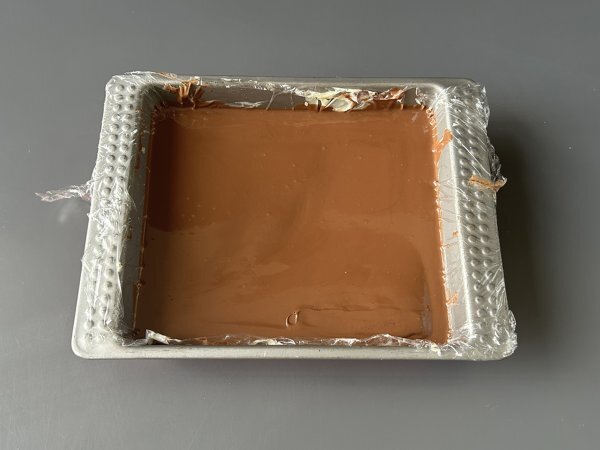 Remove from the refrigerator and turn the plate upside down. Melt the milk chocolate together with the sunflower oil and spread it on the base, making sure it is well distributed. Tap again on the worktop to level it.
Remove from the refrigerator and turn the plate upside down. Melt the milk chocolate together with the sunflower oil and spread it on the base, making sure it is well distributed. Tap again on the worktop to level it.
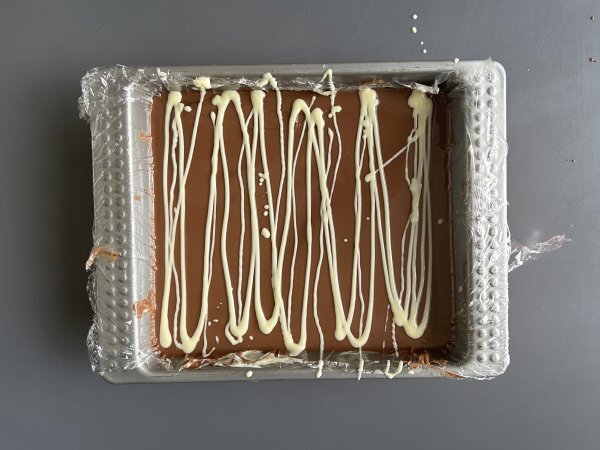 Melt the rest of the white chocolate, put it in a piping bag and draw lines on the milk chocolate surface. It does not matter if they are not perfectly straight or parallel.
Melt the rest of the white chocolate, put it in a piping bag and draw lines on the milk chocolate surface. It does not matter if they are not perfectly straight or parallel.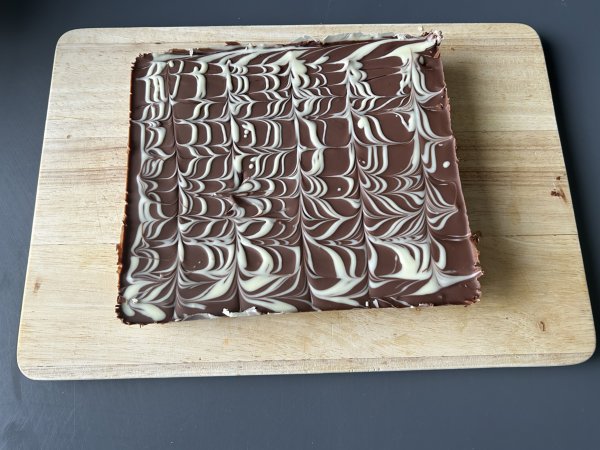 Before the chocolate hardens, run a wooden skewer or toothpick along the surface, perpendicular to the lines, back and forth, to create a decorative veined effect. Cool again for a few minutes in the refrigerator.
Before the chocolate hardens, run a wooden skewer or toothpick along the surface, perpendicular to the lines, back and forth, to create a decorative veined effect. Cool again for a few minutes in the refrigerator.
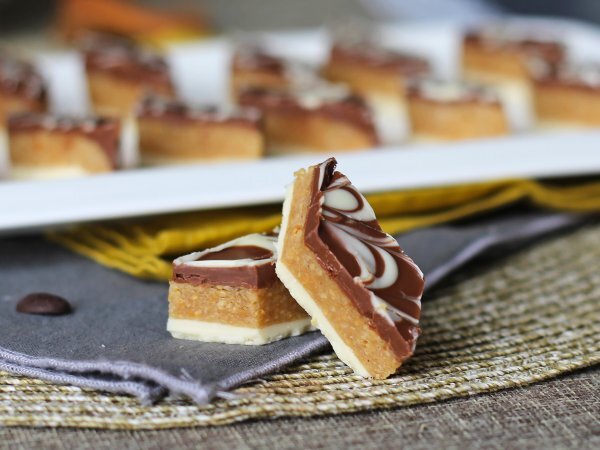 Once the chocolate has hardened, cut into portions of the desired size and shape: squares, rectangles or diamonds. Serve, and that's it!
Once the chocolate has hardened, cut into portions of the desired size and shape: squares, rectangles or diamonds. Serve, and that's it!
FAQ ❓
What type of chocolate is used in the rkhama recipe?
Can peanuts be substituted in this Moroccan sweet?
How to preserve homemade rkhama?
Is rkhama suitable for people with celiac disease?
What other variations can be made when preparing rkhama?
What flavors go well with rkhama?
What drinks can be served with this Moroccan sweet?
When is rkhama usually enjoyed?
Why is salt added to rkhama if it is a sweet?
Can I make this recipe without a mold?
Nutrition
- Carbo: 39.7g
- Total fat: 34.4g
- Saturated fat: 13.6g
- Proteins: 12.1g
- Fibers: 4.7g
- Sugar: 30.4g
- ProPoints: 14
- SmartPoints: 22

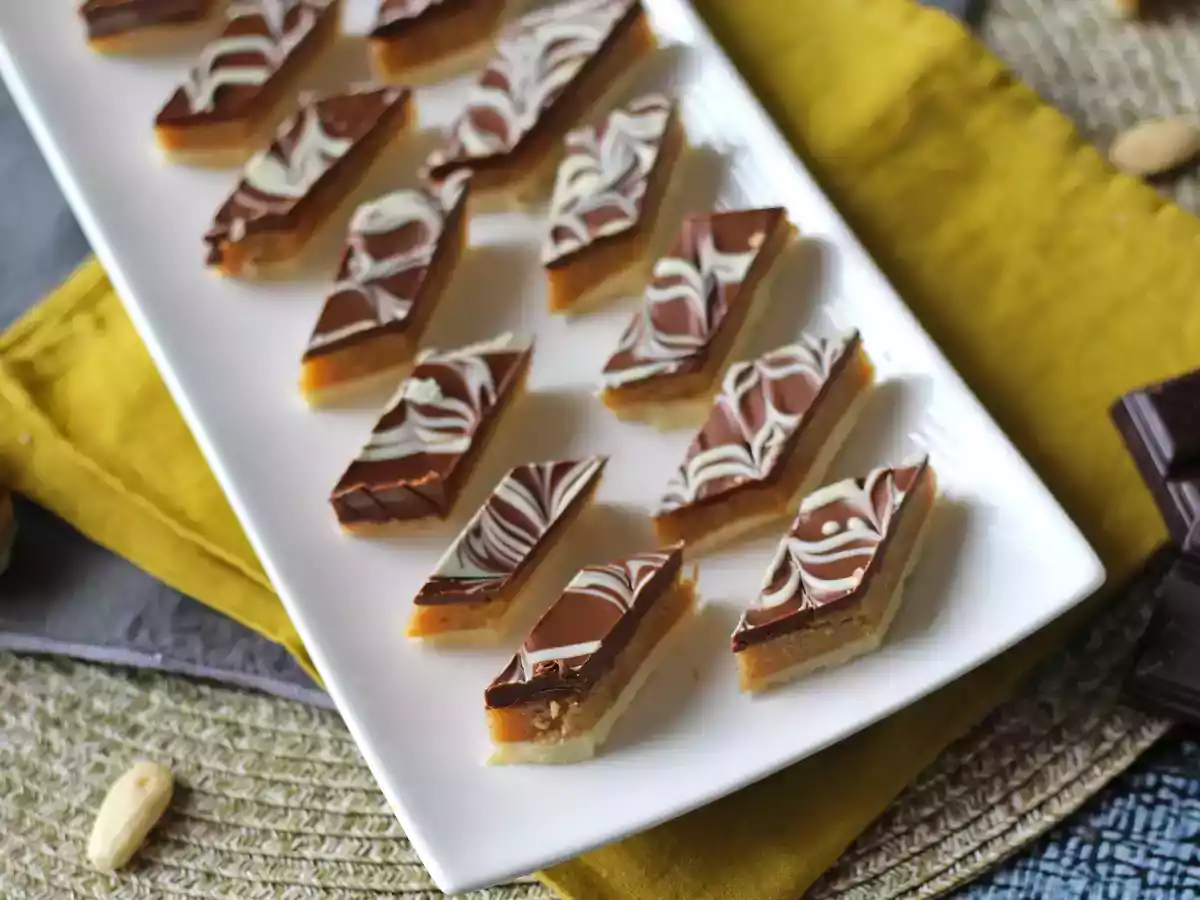
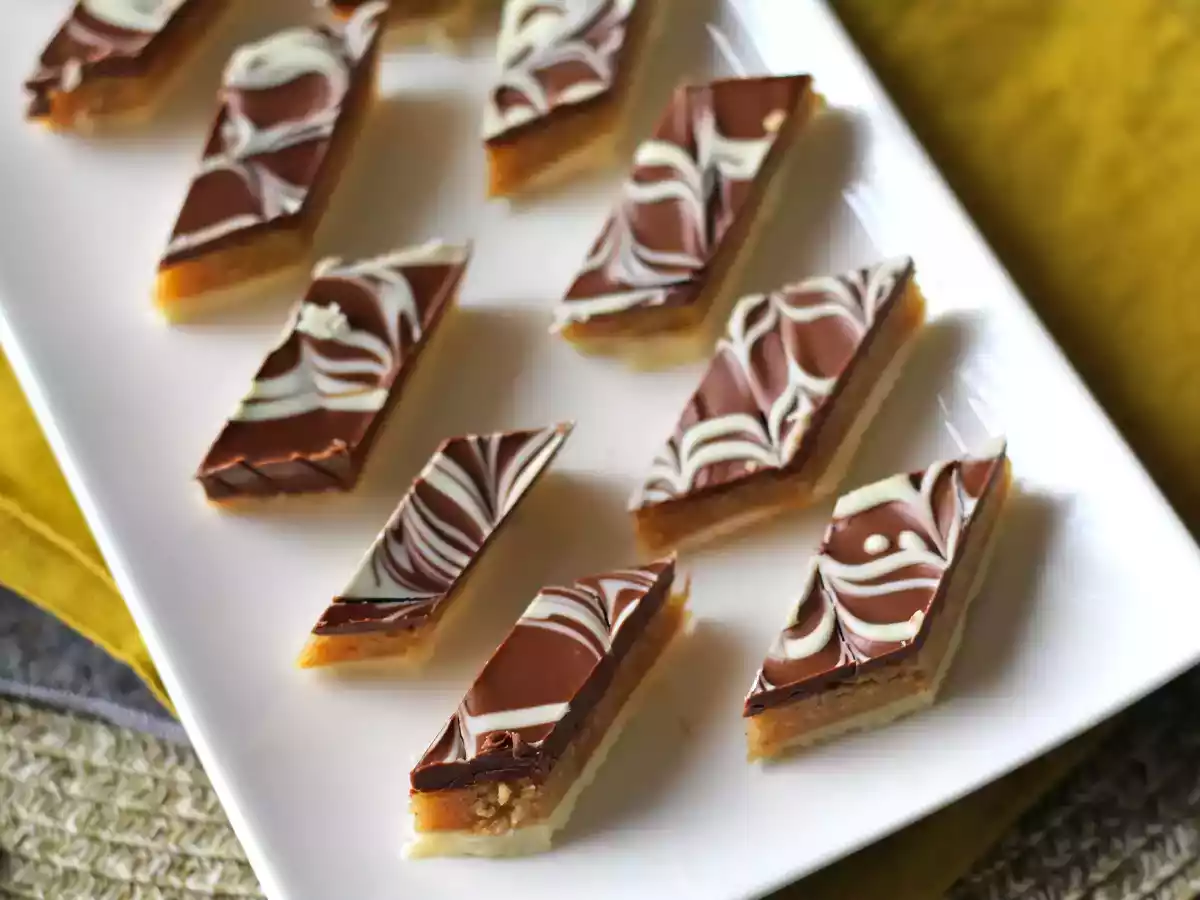



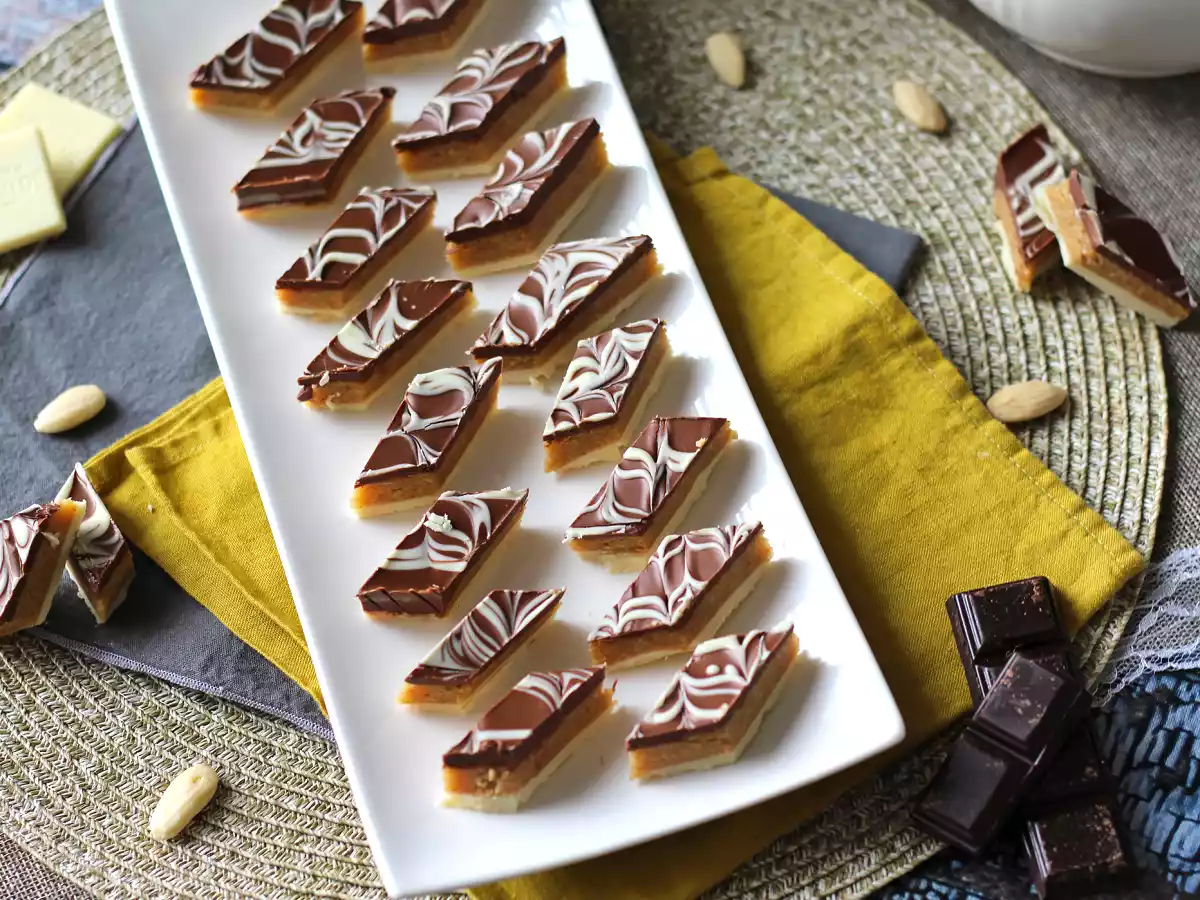
Rate this recipe